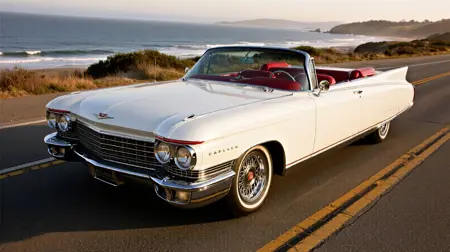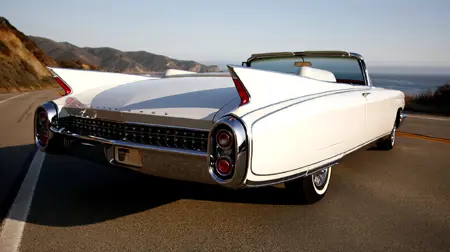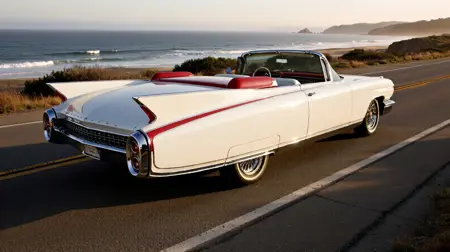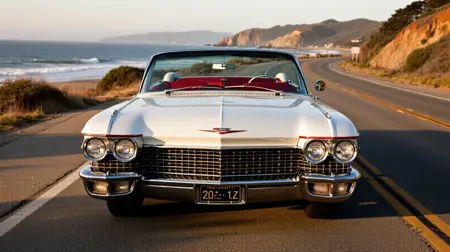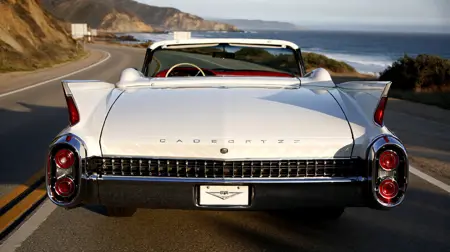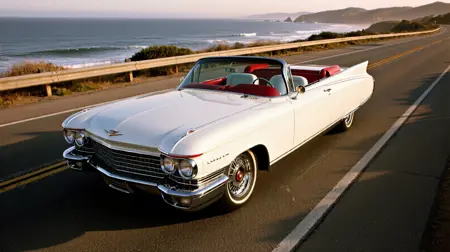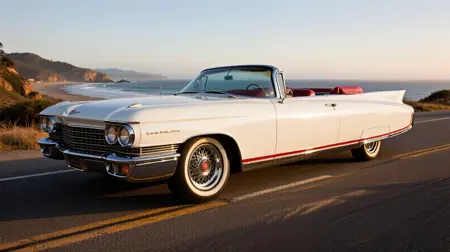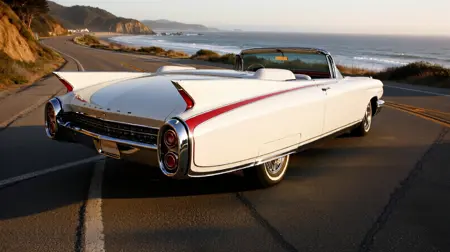Cadillac Eldorado Biarritz - 1960
Details
Download Files
About this version
Model description
Grace Kelly in Chrome: The Pivotal 1960 Cadillac Eldorado Biarritz
The 1960 Cadillac Eldorado Biarritz stands as a landmark of American automotive history, a nineteen-foot-long testament to post-war optimism and the pinnacle of the Jet Age. More than just a luxury car, it represents a crucial turning point in design, acting as a stylistic bridge between two distinct decades. It masterfully refined the unbridled flamboyance of the 1950s, epitomized by the towering tailfins of the 1959 models, and introduced a new, more elegant aesthetic that would define the 1960s. Positioned at the absolute summit of the General Motors hierarchy, the Biarritz was the "Standard of the World," a statement of ultimate success for those who owned one.
The car's design evolution was guided by the new leadership of GM Styling chief Bill Mitchell, who favored a more subtle elegance over the wild chrome of his predecessor, Harley Earl. Working with designer Dave Holls, Mitchell's team didn't scrap the iconic 1959 body but undertook a comprehensive and masterful refinement. The most significant change was to the tailfins; they were subtly lowered and given a sleeker profile, while the iconic twin "bullet" taillights were replaced by cleaner, vertically integrated oval nacelles. The front of the car was similarly reimagined, with a cleaner, full-width grille that the company brochure described as having an "elegance that it might have been crafted by a master jeweler". This "restrained use of adornment" signaled a deliberate move away from the "fin wars" toward a more mature and sophisticated design language.
Beneath the sculpted sheet metal, the 1960 Biarritz was a technological powerhouse, marking the final year for several key features. Standard equipment was the formidable 390-cubic-inch V-8 engine, which, in the Eldorado, was equipped with a high-performance triple two-barrel carburetor setup known as "Tri-Power". This system boosted output to a commanding 345 horsepower, making it a key differentiator for the top-of-the-line model. 1960 was the last year this potent engine came standard on the Eldorado. Also standard for the final time was an ambitious air suspension system, which replaced conventional coil springs with pneumatic air bags to deliver an unparalleled "magic carpet" ride. While technologically advanced, the system proved troublesome and was often replaced with more reliable coil springs, a common and accepted modification for collectors today.
To step inside the Biarritz was to enter a world of all-inclusive opulence. Its lofty $7,401 price tag was justified by a staggering list of standard features that were mere options on lesser vehicles. The interior was swathed in top-grain leather, available with highly desirable bucket seats at no extra cost. The roster of standard equipment included a six-way power-adjustable seat, power windows (including power vent windows), electric door locks, and a remote-control trunk release. Advanced technologies like the "Autronic Eye" automatic headlight dimmer and Cruise Control were also part of the package, underscoring the Biarritz's status as a futuristic machine for its time.
In the ultra-luxury market, the Biarritz faced formidable rivals in the Lincoln Continental Mark V and the Imperial Crown Convertible. The Lincoln was even larger, while the Imperial boasted a more powerful standard engine. Yet, Cadillac outsold both competitors combined, a testament to its powerful brand image and a design that perfectly captured the cultural moment. Its rarity was guaranteed from the start; only 1,285 Biarritz convertibles were produced for 1960, a tiny fraction of Cadillac's total output. This scarcity makes it a blue-chip collectible today, with values for top examples exceeding $276,000. For collectors, it occupies a unique sweet spot, offering the ultimate tailfin experience and final-year powertrain at a more accessible price point than its more famous 1959 predecessor.
Ultimately, the 1960 Cadillac Eldorado Biarritz is a vehicle of profound duality. It is both the final, glorious expression of 1950s grandeur and the elegant harbinger of 1960s sophistication. It closed the chapter on an era of excess while setting a new, more refined standard for the decade to come, forever cementing its legacy as an enduring icon of American luxury.
